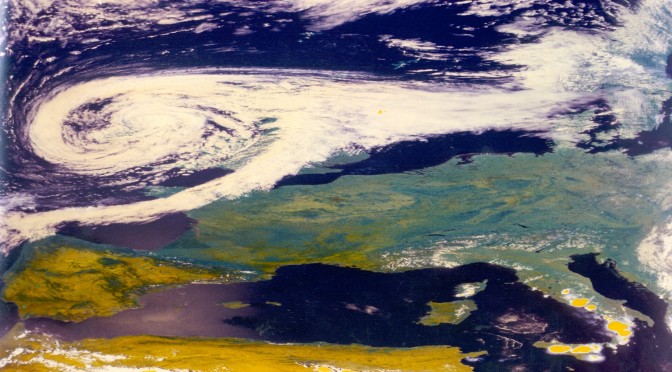Waves and Bjerknes polar frontal model
So far we only described vertical and horizontal motions by simplified equations (Units 7-9, 18-20). This unit introduces waves at different scales and Bjerknes frontal model that bases on the idea of wave formation along the polar front. This unit introduces the concepts of warm, cold and occlusion fronts and the horizontal and vertical motions leading to cloud and precipitation formation of different type that we discussed in units 9 and 10.

Learning goals
After completion of this unit students will be able to
- To explain the role of Rossby-waves for the dynamics of extra-tropical cyclones by means of the Bjerknes polar frontal theory
- Distinguish between warm and cold fronts by their cloud morphology, the change in thermodynamical state variables, their dynamical behavior and slope
- Analyze weather associated with frontal passages
- Determine the distance between shear caused cloud bands (graduate students)
Students’ Tasks
- Watch this video
- Read chapter 6.9.2.1 to 6.9.2.2 (included) and 6.10 to 6.10.2.1 (included) of Lectures in Meteorology
- Answer the questionnaire by Thursday 2359 AKST
- Watch this worked problem
- Participate in the discussion channel of this unit on the discussion board
- Solve the problems assigned at your class level in this unit 21 problem sheet and submit your solutions to cmoelders@gmail.com by Thursday 2359 Alaska time.
Supplementary Material
You can get a printout of the unit 21 powerpoint presentation.
© 2019 Nicole Mölders | All rights reserved

